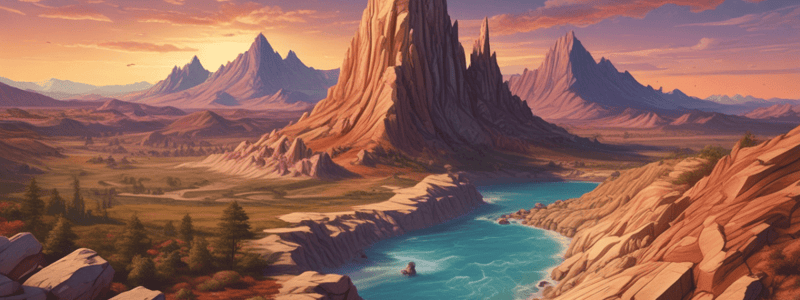Podcast
Questions and Answers
What was the composition of the first crust formed on Earth?
What was the composition of the first crust formed on Earth?
- Basaltic rock (correct)
- Silica-rich felsic rock
- Metamorphic rock
- Granitic rock
What process led to the creation of the silica-rich crust that became the felsic continents?
What process led to the creation of the silica-rich crust that became the felsic continents?
- Partial melting of the lower portion of the basaltic crust (correct)
- Weathering and erosion of the basaltic crust
- Cooling of the planet's surface
- Deposition of sedimentary rocks
What is the term for the ancient part of the Earth's crust that dates from the Precambrian era?
What is the term for the ancient part of the Earth's crust that dates from the Precambrian era?
- Supercontinent
- Platform
- Shield (correct)
- Craton
What process led to the exposure of the Precambrian craton in the Grand Canyon?
What process led to the exposure of the Precambrian craton in the Grand Canyon?
What is the significance of rounded sedimentary grains found in cratonic rocks?
What is the significance of rounded sedimentary grains found in cratonic rocks?
What type of rock is greenstone?
What type of rock is greenstone?
What is the name of the supercontinent that included West Africa, the South American craton, and Greenland?
What is the name of the supercontinent that included West Africa, the South American craton, and Greenland?
What is the process by which the continents move together and then break apart to form new supercontinents?
What is the process by which the continents move together and then break apart to form new supercontinents?
What does the presence of greenstones in cratons indicate?
What does the presence of greenstones in cratons indicate?
What is the estimated time frame for the next supercontinent to form, based on the current movement of the continents?
What is the estimated time frame for the next supercontinent to form, based on the current movement of the continents?
Flashcards are hidden until you start studying



